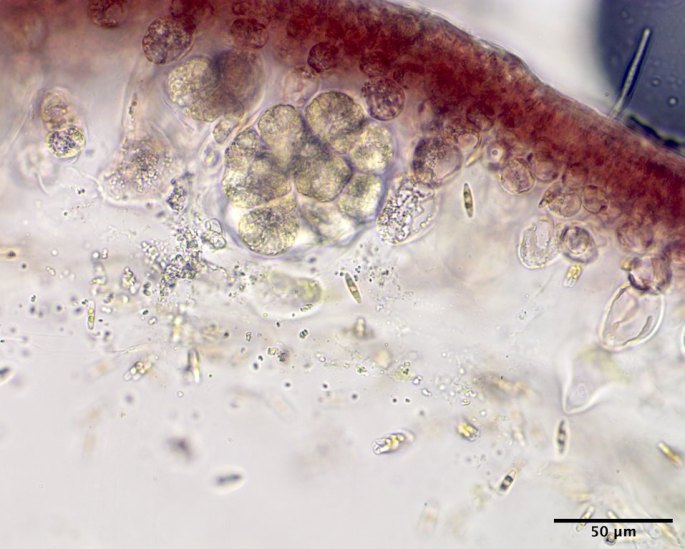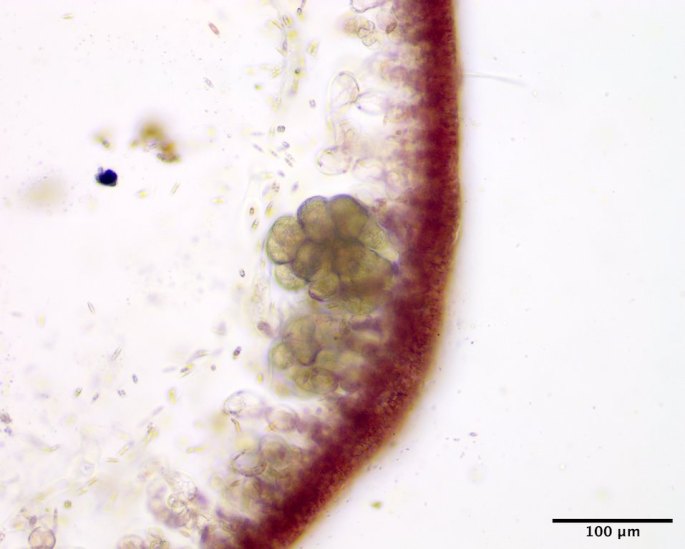Thalli range from 5-50 cm in height, with one to several fronds arising from a holdfast (Image A). Axes irregularly branched, typically only to one order, and arising from lower regions of the thallus and commonly overgrowing the main axis (Image B). Younger axes are terete and characterized by a sparsely filamentous medulla, but quickly become irregularly compressed in part and hollow, the medullary filaments typically lining the hollow centre and bearing the round cells of the inner cortex (Image C). Mature females produce numerous relatively small and compact carposporophytes in the medulla (Images D & E).
This species holds superficial resemblance to Devaleraea ramentacea (Linnaeus) Guiry, which is typically a firmer species and lacks medullary filaments surrounding the central cavity, and Cystoclonium purpureum (Hudson) Batters, which has a solid filamentous medulla and a stoloniferous base.
Dumontia contorta is common in intertidal pools on rock (also on shells and other algae) in the late winter to early fall, but genetically verified records range from upper intertidal pools to subtidally (5 m). Verified records range from CN to the island of NL, as well as from Europe.
 Image A. Tuft of individuals in a low intertidal pool on rock at Letete, Bay of Fundy, NB (EGWS000382).
Image A. Tuft of individuals in a low intertidal pool on rock at Letete, Bay of Fundy, NB (EGWS000382).
 Image B. Pressed individual displaying the typical branching habit (upper intertidal pool; Portland, ME; GWS002671).
Image B. Pressed individual displaying the typical branching habit (upper intertidal pool; Portland, ME; GWS002671).
 Image C. Transverse section of a vegetative axis with sparse filaments lining a hollow cavity and bearing a cortex of small round cells (EGWS000382).
Image C. Transverse section of a vegetative axis with sparse filaments lining a hollow cavity and bearing a cortex of small round cells (EGWS000382).
 Image D. Close up of a compact carposporophyte (subtidal (4 m) on a shell, Carrying Cove, New River Beach, NB; GWS048765).
Image D. Close up of a compact carposporophyte (subtidal (4 m) on a shell, Carrying Cove, New River Beach, NB; GWS048765).
 Image E. Cluster of compact carposporophytes in a reproductive female (GWS048765).
Image E. Cluster of compact carposporophytes in a reproductive female (GWS048765).
